Papers by Dimitris Germanos
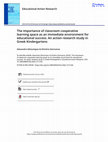
Educational Action Research, Jun 2, 2020
Classroom space is a fundamental field of interaction in which all interchange and determination ... more Classroom space is a fundamental field of interaction in which all interchange and determination activities between the person and the social environment can be developed. The purpose of this study is to demonstrate the systemic relationship between places and groups. It specifically investigates how the pedagogical reorganization of classroom space during the application of cooperative structured mathematical activities can lead to educational success. The method employed was action research. The research tools used were the sociogram, an observation guide and an archive, interviews, math tests and photos. The assessment of the programme was formative and final. The basic conclusion was that both the places the children created and the group have a systemic function in the classroom's educational environment because their structure and function have common characteristics. This systemic function led the children in the research classrooms to 'educational success'; they all did better in mathematical activities and tests than the children in the control classes. They particularly improved their ability to ask questions, to problem solving, to compare and combine information and thoughts, and to generalize their ideas and the mathematical concepts.

This paper discusses the paradoxes that arise from efficiency-driven approaches to child rearing ... more This paper discusses the paradoxes that arise from efficiency-driven approaches to child rearing in the digital age. Drawing from research on the intrinsically motivated nature of human learning and Winnicott’s pioneering work on the importance of “being held” and given license to play, I challenge the increasing pressures, especially on the very young, to meet so-called 21st century requirements. I reflect on what supportive environments for life-long learning may look like, and I identify moments in the cycle of adult-supported self-directed learning, each of which calls for its own ambient qualities and spatiotemporal arrangements. To be viable, I claim, 21st century educationalists will need to put the learners back into the driver’s seat, mindful of their interests, contributions, and abilities to self-improve. And this turn requires careful attention to the psychological needs without which no child can thrive. The settings, or “holding environments” best suited to live up to ...
This paper presents, through a case study, the special conditions needed for the foundation, deve... more This paper presents, through a case study, the special conditions needed for the foundation, development and operation of a school library, which were met exclusively through the collaboration between teachers of different grades and parents. The study concerns the library of a Greek elementary school, situated in an educationally degraded area of the broader district of Thessaloniki, within an indifferent, or rather negative educational and social environment.
Educational Action Research
Διάλογοι! Θεωρία και πράξη στις επιστήμες αγωγής και εκπαίδευσης, 2016
The main objective of this paper is to present, through a case study, the specific conditions acc... more The main objective of this paper is to present, through a case study, the specific conditions according to which a school library can be founded, developed and can operate in a Greek public elementary school and which ensued from the collaboration between parents and teachers belonging to different educational grades in an indifferent or negative educational and social environment.
Διάλογοι! Θεωρία και πράξη στις επιστήμες αγωγής και εκπαίδευσης, 2016
Διάλογοι! Θεωρία και πράξη στις επιστήμες αγωγής και εκπαίδευσης, 2016

Built and arranged space is enriched with psychological, social and pedagogical dimensions that c... more Built and arranged space is enriched with psychological, social and pedagogical dimensions that complete its material quality. The relationship between child and space, placed at the very centre of the pedagogical dimension of space, receives special importance in a multicultural class, for it supports the opening of the educational process to cultural diversity. Pilot research and applications undertaken since 1996 at the Aristotle University of Thessaloniki, aimed at reforming this relationship in the context of the Greek traditional nursery school, have lead to the creation of a method that rearranges school space, based on pedagogical, psycho-sociological, and architectural criteria. The main objective of the method is the re-modeling of the school-child relationship in order to adapt it to cooperative teaching approaches, as well as to the particularities of the multicultural educational environment. This article presents the theoretical foundations of the method, its guidelines of use as well as its evaluation frame, through experimental applications of the method to 69 schools in Greece and Cyprus.

Πρακτικά συμποσίου: "Χώροι του παιδιού ή χώροι για το παιδί;"/ Symposium Proceedings: “Spaces for children or children’s spaces?”, 2020
The school building design is liable to regulations that aim at the space creation through two ta... more The school building design is liable to regulations that aim at the space creation through two targets. The first one is the materialization of the pedagogical and social directions of the education, while the second refers to the adjustment of the educational environment to the student.
As the research in Greece shows, the design frame of the school space is characterized by out of date architectural and pedagogical stereotypes that prevent school’s educational upgrading. According to an architectural aspect, the problem lies in the dominance of the mono-functional space characteristics, that neither have space flexibility, nor are in relation with the student’s interests and imagination. In that way, they provide institutional elements to the school space, that form an educational environment “for the child” with criteria especially for “what has to do” instead of “what is” the child.
An answer to that problem is an approach of school’s space design that is adjusted to student himself and considers him as an active participant of the educational process. That is the User approach (the “U” approach) that takes into consideration the cognitive and psychosocial demands of the educational process and also the age characteristics and the interests of the student. The dynamic that arises from the User’s approach incorporates these elements to the architectural design giving emphasis on the flexibility and transformability of space. So, the dynamic of the presence of the student-participant in the educational process is attended by the architectural characteristics of the school space and the dynamic of how the child is using it.
This approach is materialized through the method of the Pedagogical Space Design, which uses criteria of arrangement and use of the school space that are based on the correlation between the child’s characteristics and those of the cooperative teaching and learning. The implementation of this method to schools in Greece and Cyprus gives an alternative about the creation of children's spaces in the educational environment.
Symposium Title: Ορίζοντας την έρευνα-δράση στην Ελλάδα.
Paper Abstract: Η συστημική προσέγγιση τ... more Symposium Title: Ορίζοντας την έρευνα-δράση στην Ελλάδα.
Paper Abstract: Η συστημική προσέγγιση της εκπαιδευτικής αλλαγής στηρίζεται στην υιοθέτηση της έρευνας -δράσης-επιμόρφωσης ως εργαλείου για συμμετοχική διαμόρφωση μιας νέας γνώσης, προσανατολισμένης στην ατομική αλλαγή. Σ’ αυτό το πλαίσιο, ο χώρος
αποτελεί προνομιακό πεδίο για την ανάπτυξη αυτής της μορφής έρευνας, επειδή αφενός αποτυπώνει τη δυναμική της αλληλεπίδρασης μεταξύ των δομών του
συστήματος σχολική τάξη και, αφετέρου, γιατί είναι το πεδίο για την υλοποίηση της εκπαιδευτικής αλλαγής. Πρόσφατες έρευνες τεκμηριώνουν τη συμβατότητα της
έρευνας- δράσης- επιμόρφωσης με τη συστημική ποιότητα του χώρου και αναδεικνύουν τις νέες δυνατότητες που αναδύονται από τηνερευνητική τους
συσχέτιση στο εκπαιδευτικό περιβάλλον.

In (D. Germanos & M. Liapi. Eds) Places for Learning Experiences. Think, Make, Change. 2015. pages 56-65, 2015
This paper discusses the paradoxes that arise from efficiency-driven approaches to child rearing ... more This paper discusses the paradoxes that arise from efficiency-driven approaches to child rearing in the digital age. Drawing from research on the intrinsically motivated nature of human learning and Winnicott’s pioneering work on the importance of “being held” and given license to play, I challenge the increasing pressures, especially on the very young, to meet so-called 21st century requirements. I reflect on what supportive environments for life-long learning may look like, and I identify
moments in the cycle of adult-supported self-directed learning, each of which calls for its own ambient qualities and spatio- temporal arrangements. To be viable, I claim, 21st century educationalists will need to put the learners back into the driver’s seat, mindful of their interests, contributions, and abilities to self-improve. And this turn requires careful attention to the psychological needs without which no child can thrive. The settings, or “holding environments” best suited to live up to this challenge, I conclude, will need to be flexible, inclusive, and informed by what happens outside their walls, but they can’t be place-less! Schools are one among other sites within a wider range of learning opportunities. Yet they can’t claim exclusivity. Nor can they be made solely accountable for student outcomes: the era of the citadel school is over. New settings are emerging, mostly hybrids, which today’s life-long-learners inhabit and traverse in novel ways.

Research has shown that aspects of the subject’s behavior are governed by a sense of space that p... more Research has shown that aspects of the subject’s behavior are governed by a sense of space that permeates social interactions, is reflected on the built space and gives the social environment both a material and a symbolic dimension. In this context, the place is a subjective version of the space, associated with the desires, the choices and the capabilities of the subject. The concept of the place acquires special interest in the educational process, because the child forms places spontaneously, whenever he has the chance to do so, having the innate need to develop a field of expression and constant interaction with his social environment.
Can the spontaneous creation and functioning of places by the children become a permanent and predesigned component of school space? This was the issue of a research study conducted in kindergartens in Thessaloniki, organized around an educational game activity in the classroom.
We named educational places the micro-environments created by the children during this research. Observation has shown that an educational place is composed by a module of both spaces and activities, created and managed exclusively by the children.
The evaluation of the data showed that the educational place, as element of school space, had multiple positive effects on the educational process.
The most important effect was that a new model of school space emerged from the development and the functioning of educational places, which is based on an informal and continuous re-planning of space by the child during the educational process associated with his activity.
This model highlights an interesting dimension of flexibility of space as a factor of the educational environment, which is exclusively owed to the process of its utilization. Adopting this model, the school space can be transformed into a field of educational places, directed to the acquisition of learning experiences

IASL , 2009
Through a case study, this paper presents specific conditions under which a library can be founde... more Through a case study, this paper presents specific conditions under which a library can be founded, developed and administered in a Greek public school by the collaboration of parents and educators of different grades, yet in an uninterested or negative educational and social environment.
Approach to this subject involves associated contents from pedagogics, children literature and planning of school rooms on pedagogic criteria. In particular:
1. The pedagogic organization and development of the library was in accordance with international standards, while the following operational goals were set: (a) the use of the library as an expanded form of a school class, (b) the utilization of the school library also as a lending library and (c) the function of the library as a cultural sphere with special focus on fostering of lifelong readers (School Library Manifesto, IFLA/UNESCO, The Primary School library Guidelines, 2000. London: The Library Assotiation).
2. Comprising a basic part of the library’s collection, children literature is integrated since 2003 in the elementary school’s comprehensive program as an independent subject of expertise, while it is utilized interdisciplinary for the approach of other subjects (Raphael, T. E. & Hiebert, E. H., 1996. Creating an integrated approach to literacy instruction. New York: Harcourt Brace College Publishers).
3. From the perspective of planning the library with pedagogic criteria, the architectural configuration was brought into focus, together with the use of space in a way that: (a) the library offers a rich stimulus area and (b) the development of communication and interaction processes is facilitated (Dudek M., 2000. Architecture of schools. Oxford: Architectural Press, Weinstein c.S. David T.C. (eds), 1987. Spaces for children. New York: Plenum Press).
After the opening of the library, research was directed to studies on putting it into play by the school and on its viability with concerns on the administrator’s role and it’s incorporation to the educative proceedings.
During the data selection, the principle of triangulation was implemented with the following tools being applied:
- Interview guide for the two library administrators
- Questionnaires for children-users of the library
- Recording method for the circulation of books’ lending
For elaborating the data, the thematic content analysis and the statistic approach were implemented.
The research highlighted various difficulties in integrating the library with the organization and the everyday teaching and learning process. The library was used mainly as a lending library for literary books from all the students of the school and partially as a database for working out school projects. The causes of this situation are associated to the state’s standpoint regarding the institution of school libraries, as well as the attitude of the school’s educators themselves.
Since it’s mainly used as a lending library, the essential contribution of the school library is in forming a reader’s culture.
The interest and the originality of this research lie in investigating and presenting potentials of creating, developing and operating a school library from the school itself in adverse conditions. Among others, findings of this research show the reader’s profile being shaped by students thanks to the particular library.

L’espace bâti et aménagé est enrichi par des dimensions psychologique, sociale et pédagogique, qu... more L’espace bâti et aménagé est enrichi par des dimensions psychologique, sociale et pédagogique, qui complètent sa qualité matérielle. Le rapport de l’enfant à l’espace, situé au centre de la dimension pédagogique de l’espace, s’avère très important dans une classe multiculturelle, parce qu’il favorise l’ouverture du processus éducatif vers la diversité culturelle. Des recherches et des applications pilotes, entreprises depuis 1996 à l’Université Aristote de Thessalonique pour reformer ce rapport au sein de l’école maternelle traditionnelle grecque, ont abouti à la création d’une méthode de réaménagement de l’espace scolaire conçue d’après des critères pédagogiques, psychosociologiques et architecturaux. L’objectif principal de la méthode est le remodelage du rapport de l’enfant à l’espace afin de l’adapter aux approches coopératives d’enseignement, ainsi qu’aux particularités d’un environnement éducatif multiculturel. Cet article présente les fondements théoriques et les règles d’application de la méthode, ainsi que son évaluation au travers des réalisations pilotes dans 69 écoles en Grèce et à Chypre.
European Early Childhood Education Research Journal, 1997
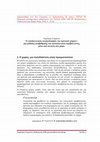
Built and arranged space is enriched with psychological, social and pedagogical dimensions that c... more Built and arranged space is enriched with psychological, social and pedagogical dimensions that complete its material quality. The relationship between child and space, placed at the very centre of the pedagogical dimension of space, receives special importance in a multicultural class, for it supports the opening of the educational process to cultural diversity. Pilot research and applications undertaken since 1996 at the Aristotle University of Thessaloniki, aimed at reforming this relationship in the context of the Greek traditional nursery school, have lead to the creation of a method that rearranges school space, based on pedagogical, psycho-sociological, and architectural criteria. The main objective of the method is the re-modeling of the school-child relationship in order to adapt it to co-operative teaching approaches, as well as to the particularities of the multicultural educational environment. This article presents the theoretical foundations of the method, its guidelines of use as well as its evaluation frame, through experimental applications of the method to 69 schools in Greece and Cyprus.
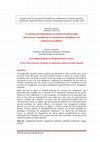
"Le changement éducatif constitue toujours une demande en Grèce, surtout pour ce qui concerne l’é... more "Le changement éducatif constitue toujours une demande en Grèce, surtout pour ce qui concerne l’école elle-même. Cet article examine ce sujet au niveau de la classe scolaire, considérant que c’est là que se situe le lieu où sera évalué si un changement de conditions correspond ou non à un vrai changement. L’approche du changement est faite dans un contexte systémique, qui relie l’école en tant qu’organisation avec l’enseignant en tant qu’acteur du changement, ainsi que le changement organisationnel avec le changement individuel.
Après avoir mis en place un contexte théorique du processus de changement, sont présentées deux enquêtes qui se centrent sur le changement individuel qui fait passer l’école d’un état traditionnel à un état coopératif. Ces enquêtes ont la particularité que l’une se situe dans un environnement réel, tandis que l’autre dans un environnement virtuel. L’analyse des données a montré que les interventions-pilotes dans un environnement virtuel, en rapport avec des activités de réflexivité et d interaction sociale, peuvent contribuer de manière efficace à la réalisation d’un changement individuel éducatif. Au sein de ce processus, le rapport à l’espace occupe une place importante, puisque l’espace délimite le développement des activités par le biais desquelles se développe un processus de changement. Finalement, il en résulte qu’il est important d’avoir un dispositif de changement qui puisse opérer simultanément au niveau organisationnel et individuel, d’une manière telle qui relie la recherche, la formation et les expériences pilotes en milieu éducatif.
Mots-clés : changement éducatif ; changement individuel ; méthode coopérative ; espace scolaire."



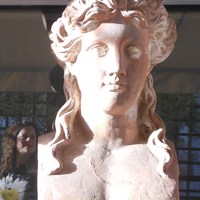


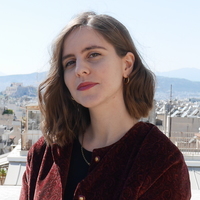




Uploads
Papers by Dimitris Germanos
As the research in Greece shows, the design frame of the school space is characterized by out of date architectural and pedagogical stereotypes that prevent school’s educational upgrading. According to an architectural aspect, the problem lies in the dominance of the mono-functional space characteristics, that neither have space flexibility, nor are in relation with the student’s interests and imagination. In that way, they provide institutional elements to the school space, that form an educational environment “for the child” with criteria especially for “what has to do” instead of “what is” the child.
An answer to that problem is an approach of school’s space design that is adjusted to student himself and considers him as an active participant of the educational process. That is the User approach (the “U” approach) that takes into consideration the cognitive and psychosocial demands of the educational process and also the age characteristics and the interests of the student. The dynamic that arises from the User’s approach incorporates these elements to the architectural design giving emphasis on the flexibility and transformability of space. So, the dynamic of the presence of the student-participant in the educational process is attended by the architectural characteristics of the school space and the dynamic of how the child is using it.
This approach is materialized through the method of the Pedagogical Space Design, which uses criteria of arrangement and use of the school space that are based on the correlation between the child’s characteristics and those of the cooperative teaching and learning. The implementation of this method to schools in Greece and Cyprus gives an alternative about the creation of children's spaces in the educational environment.
Paper Abstract: Η συστημική προσέγγιση της εκπαιδευτικής αλλαγής στηρίζεται στην υιοθέτηση της έρευνας -δράσης-επιμόρφωσης ως εργαλείου για συμμετοχική διαμόρφωση μιας νέας γνώσης, προσανατολισμένης στην ατομική αλλαγή. Σ’ αυτό το πλαίσιο, ο χώρος
αποτελεί προνομιακό πεδίο για την ανάπτυξη αυτής της μορφής έρευνας, επειδή αφενός αποτυπώνει τη δυναμική της αλληλεπίδρασης μεταξύ των δομών του
συστήματος σχολική τάξη και, αφετέρου, γιατί είναι το πεδίο για την υλοποίηση της εκπαιδευτικής αλλαγής. Πρόσφατες έρευνες τεκμηριώνουν τη συμβατότητα της
έρευνας- δράσης- επιμόρφωσης με τη συστημική ποιότητα του χώρου και αναδεικνύουν τις νέες δυνατότητες που αναδύονται από τηνερευνητική τους
συσχέτιση στο εκπαιδευτικό περιβάλλον.
moments in the cycle of adult-supported self-directed learning, each of which calls for its own ambient qualities and spatio- temporal arrangements. To be viable, I claim, 21st century educationalists will need to put the learners back into the driver’s seat, mindful of their interests, contributions, and abilities to self-improve. And this turn requires careful attention to the psychological needs without which no child can thrive. The settings, or “holding environments” best suited to live up to this challenge, I conclude, will need to be flexible, inclusive, and informed by what happens outside their walls, but they can’t be place-less! Schools are one among other sites within a wider range of learning opportunities. Yet they can’t claim exclusivity. Nor can they be made solely accountable for student outcomes: the era of the citadel school is over. New settings are emerging, mostly hybrids, which today’s life-long-learners inhabit and traverse in novel ways.
Can the spontaneous creation and functioning of places by the children become a permanent and predesigned component of school space? This was the issue of a research study conducted in kindergartens in Thessaloniki, organized around an educational game activity in the classroom.
We named educational places the micro-environments created by the children during this research. Observation has shown that an educational place is composed by a module of both spaces and activities, created and managed exclusively by the children.
The evaluation of the data showed that the educational place, as element of school space, had multiple positive effects on the educational process.
The most important effect was that a new model of school space emerged from the development and the functioning of educational places, which is based on an informal and continuous re-planning of space by the child during the educational process associated with his activity.
This model highlights an interesting dimension of flexibility of space as a factor of the educational environment, which is exclusively owed to the process of its utilization. Adopting this model, the school space can be transformed into a field of educational places, directed to the acquisition of learning experiences
Approach to this subject involves associated contents from pedagogics, children literature and planning of school rooms on pedagogic criteria. In particular:
1. The pedagogic organization and development of the library was in accordance with international standards, while the following operational goals were set: (a) the use of the library as an expanded form of a school class, (b) the utilization of the school library also as a lending library and (c) the function of the library as a cultural sphere with special focus on fostering of lifelong readers (School Library Manifesto, IFLA/UNESCO, The Primary School library Guidelines, 2000. London: The Library Assotiation).
2. Comprising a basic part of the library’s collection, children literature is integrated since 2003 in the elementary school’s comprehensive program as an independent subject of expertise, while it is utilized interdisciplinary for the approach of other subjects (Raphael, T. E. & Hiebert, E. H., 1996. Creating an integrated approach to literacy instruction. New York: Harcourt Brace College Publishers).
3. From the perspective of planning the library with pedagogic criteria, the architectural configuration was brought into focus, together with the use of space in a way that: (a) the library offers a rich stimulus area and (b) the development of communication and interaction processes is facilitated (Dudek M., 2000. Architecture of schools. Oxford: Architectural Press, Weinstein c.S. David T.C. (eds), 1987. Spaces for children. New York: Plenum Press).
After the opening of the library, research was directed to studies on putting it into play by the school and on its viability with concerns on the administrator’s role and it’s incorporation to the educative proceedings.
During the data selection, the principle of triangulation was implemented with the following tools being applied:
- Interview guide for the two library administrators
- Questionnaires for children-users of the library
- Recording method for the circulation of books’ lending
For elaborating the data, the thematic content analysis and the statistic approach were implemented.
The research highlighted various difficulties in integrating the library with the organization and the everyday teaching and learning process. The library was used mainly as a lending library for literary books from all the students of the school and partially as a database for working out school projects. The causes of this situation are associated to the state’s standpoint regarding the institution of school libraries, as well as the attitude of the school’s educators themselves.
Since it’s mainly used as a lending library, the essential contribution of the school library is in forming a reader’s culture.
The interest and the originality of this research lie in investigating and presenting potentials of creating, developing and operating a school library from the school itself in adverse conditions. Among others, findings of this research show the reader’s profile being shaped by students thanks to the particular library.
Après avoir mis en place un contexte théorique du processus de changement, sont présentées deux enquêtes qui se centrent sur le changement individuel qui fait passer l’école d’un état traditionnel à un état coopératif. Ces enquêtes ont la particularité que l’une se situe dans un environnement réel, tandis que l’autre dans un environnement virtuel. L’analyse des données a montré que les interventions-pilotes dans un environnement virtuel, en rapport avec des activités de réflexivité et d interaction sociale, peuvent contribuer de manière efficace à la réalisation d’un changement individuel éducatif. Au sein de ce processus, le rapport à l’espace occupe une place importante, puisque l’espace délimite le développement des activités par le biais desquelles se développe un processus de changement. Finalement, il en résulte qu’il est important d’avoir un dispositif de changement qui puisse opérer simultanément au niveau organisationnel et individuel, d’une manière telle qui relie la recherche, la formation et les expériences pilotes en milieu éducatif.
Mots-clés : changement éducatif ; changement individuel ; méthode coopérative ; espace scolaire."
As the research in Greece shows, the design frame of the school space is characterized by out of date architectural and pedagogical stereotypes that prevent school’s educational upgrading. According to an architectural aspect, the problem lies in the dominance of the mono-functional space characteristics, that neither have space flexibility, nor are in relation with the student’s interests and imagination. In that way, they provide institutional elements to the school space, that form an educational environment “for the child” with criteria especially for “what has to do” instead of “what is” the child.
An answer to that problem is an approach of school’s space design that is adjusted to student himself and considers him as an active participant of the educational process. That is the User approach (the “U” approach) that takes into consideration the cognitive and psychosocial demands of the educational process and also the age characteristics and the interests of the student. The dynamic that arises from the User’s approach incorporates these elements to the architectural design giving emphasis on the flexibility and transformability of space. So, the dynamic of the presence of the student-participant in the educational process is attended by the architectural characteristics of the school space and the dynamic of how the child is using it.
This approach is materialized through the method of the Pedagogical Space Design, which uses criteria of arrangement and use of the school space that are based on the correlation between the child’s characteristics and those of the cooperative teaching and learning. The implementation of this method to schools in Greece and Cyprus gives an alternative about the creation of children's spaces in the educational environment.
Paper Abstract: Η συστημική προσέγγιση της εκπαιδευτικής αλλαγής στηρίζεται στην υιοθέτηση της έρευνας -δράσης-επιμόρφωσης ως εργαλείου για συμμετοχική διαμόρφωση μιας νέας γνώσης, προσανατολισμένης στην ατομική αλλαγή. Σ’ αυτό το πλαίσιο, ο χώρος
αποτελεί προνομιακό πεδίο για την ανάπτυξη αυτής της μορφής έρευνας, επειδή αφενός αποτυπώνει τη δυναμική της αλληλεπίδρασης μεταξύ των δομών του
συστήματος σχολική τάξη και, αφετέρου, γιατί είναι το πεδίο για την υλοποίηση της εκπαιδευτικής αλλαγής. Πρόσφατες έρευνες τεκμηριώνουν τη συμβατότητα της
έρευνας- δράσης- επιμόρφωσης με τη συστημική ποιότητα του χώρου και αναδεικνύουν τις νέες δυνατότητες που αναδύονται από τηνερευνητική τους
συσχέτιση στο εκπαιδευτικό περιβάλλον.
moments in the cycle of adult-supported self-directed learning, each of which calls for its own ambient qualities and spatio- temporal arrangements. To be viable, I claim, 21st century educationalists will need to put the learners back into the driver’s seat, mindful of their interests, contributions, and abilities to self-improve. And this turn requires careful attention to the psychological needs without which no child can thrive. The settings, or “holding environments” best suited to live up to this challenge, I conclude, will need to be flexible, inclusive, and informed by what happens outside their walls, but they can’t be place-less! Schools are one among other sites within a wider range of learning opportunities. Yet they can’t claim exclusivity. Nor can they be made solely accountable for student outcomes: the era of the citadel school is over. New settings are emerging, mostly hybrids, which today’s life-long-learners inhabit and traverse in novel ways.
Can the spontaneous creation and functioning of places by the children become a permanent and predesigned component of school space? This was the issue of a research study conducted in kindergartens in Thessaloniki, organized around an educational game activity in the classroom.
We named educational places the micro-environments created by the children during this research. Observation has shown that an educational place is composed by a module of both spaces and activities, created and managed exclusively by the children.
The evaluation of the data showed that the educational place, as element of school space, had multiple positive effects on the educational process.
The most important effect was that a new model of school space emerged from the development and the functioning of educational places, which is based on an informal and continuous re-planning of space by the child during the educational process associated with his activity.
This model highlights an interesting dimension of flexibility of space as a factor of the educational environment, which is exclusively owed to the process of its utilization. Adopting this model, the school space can be transformed into a field of educational places, directed to the acquisition of learning experiences
Approach to this subject involves associated contents from pedagogics, children literature and planning of school rooms on pedagogic criteria. In particular:
1. The pedagogic organization and development of the library was in accordance with international standards, while the following operational goals were set: (a) the use of the library as an expanded form of a school class, (b) the utilization of the school library also as a lending library and (c) the function of the library as a cultural sphere with special focus on fostering of lifelong readers (School Library Manifesto, IFLA/UNESCO, The Primary School library Guidelines, 2000. London: The Library Assotiation).
2. Comprising a basic part of the library’s collection, children literature is integrated since 2003 in the elementary school’s comprehensive program as an independent subject of expertise, while it is utilized interdisciplinary for the approach of other subjects (Raphael, T. E. & Hiebert, E. H., 1996. Creating an integrated approach to literacy instruction. New York: Harcourt Brace College Publishers).
3. From the perspective of planning the library with pedagogic criteria, the architectural configuration was brought into focus, together with the use of space in a way that: (a) the library offers a rich stimulus area and (b) the development of communication and interaction processes is facilitated (Dudek M., 2000. Architecture of schools. Oxford: Architectural Press, Weinstein c.S. David T.C. (eds), 1987. Spaces for children. New York: Plenum Press).
After the opening of the library, research was directed to studies on putting it into play by the school and on its viability with concerns on the administrator’s role and it’s incorporation to the educative proceedings.
During the data selection, the principle of triangulation was implemented with the following tools being applied:
- Interview guide for the two library administrators
- Questionnaires for children-users of the library
- Recording method for the circulation of books’ lending
For elaborating the data, the thematic content analysis and the statistic approach were implemented.
The research highlighted various difficulties in integrating the library with the organization and the everyday teaching and learning process. The library was used mainly as a lending library for literary books from all the students of the school and partially as a database for working out school projects. The causes of this situation are associated to the state’s standpoint regarding the institution of school libraries, as well as the attitude of the school’s educators themselves.
Since it’s mainly used as a lending library, the essential contribution of the school library is in forming a reader’s culture.
The interest and the originality of this research lie in investigating and presenting potentials of creating, developing and operating a school library from the school itself in adverse conditions. Among others, findings of this research show the reader’s profile being shaped by students thanks to the particular library.
Après avoir mis en place un contexte théorique du processus de changement, sont présentées deux enquêtes qui se centrent sur le changement individuel qui fait passer l’école d’un état traditionnel à un état coopératif. Ces enquêtes ont la particularité que l’une se situe dans un environnement réel, tandis que l’autre dans un environnement virtuel. L’analyse des données a montré que les interventions-pilotes dans un environnement virtuel, en rapport avec des activités de réflexivité et d interaction sociale, peuvent contribuer de manière efficace à la réalisation d’un changement individuel éducatif. Au sein de ce processus, le rapport à l’espace occupe une place importante, puisque l’espace délimite le développement des activités par le biais desquelles se développe un processus de changement. Finalement, il en résulte qu’il est important d’avoir un dispositif de changement qui puisse opérer simultanément au niveau organisationnel et individuel, d’une manière telle qui relie la recherche, la formation et les expériences pilotes en milieu éducatif.
Mots-clés : changement éducatif ; changement individuel ; méthode coopérative ; espace scolaire."
A number of military camps that were built in the beginning of last century in the city of Serres are now derelict, useless voids in the urban fabric. One of them, the Papalouka Camp, was chosen to be the stage for two workshops for primary school children, under the subject of architectural design and contemporary art, in conjunction with environmental awareness. The workshops took place in June of 2014 and 2015 as part of the EcoFestival organized by the Municipality of Serres with the collaboration of students from the Department of Interior Architecture, Decoration and Design of the T.E.I. of Central Macedonia.